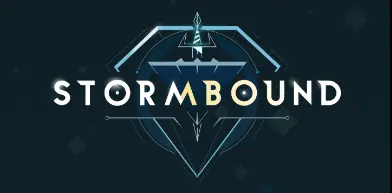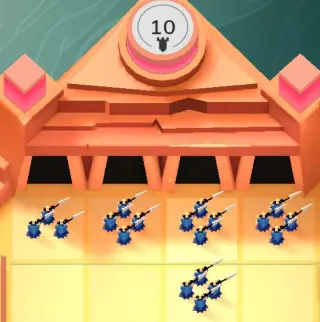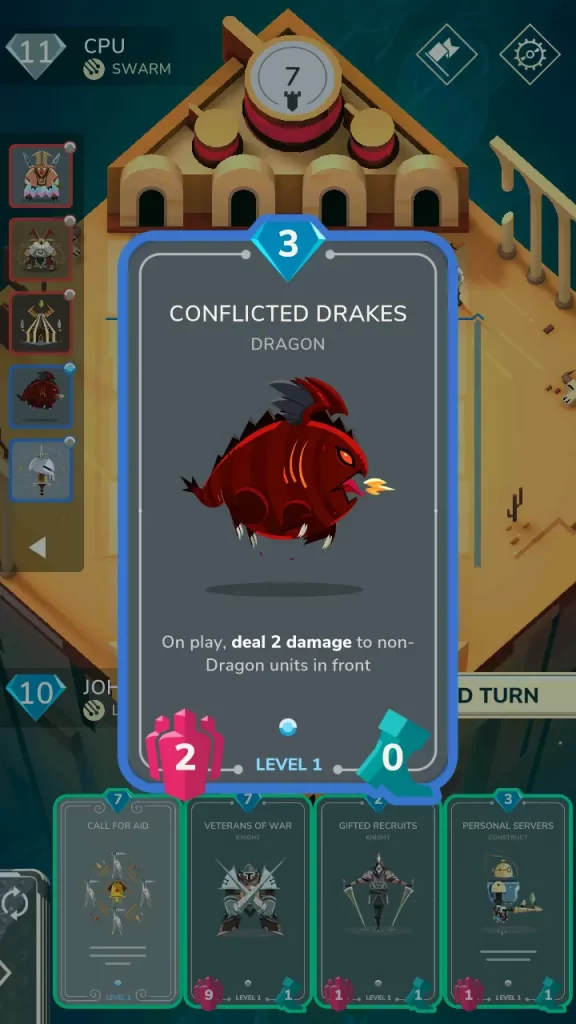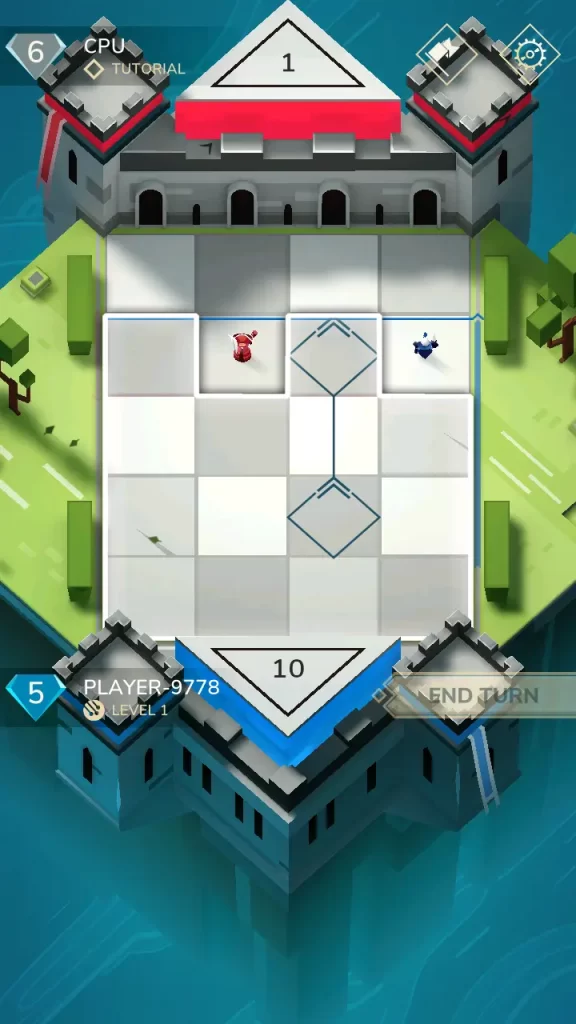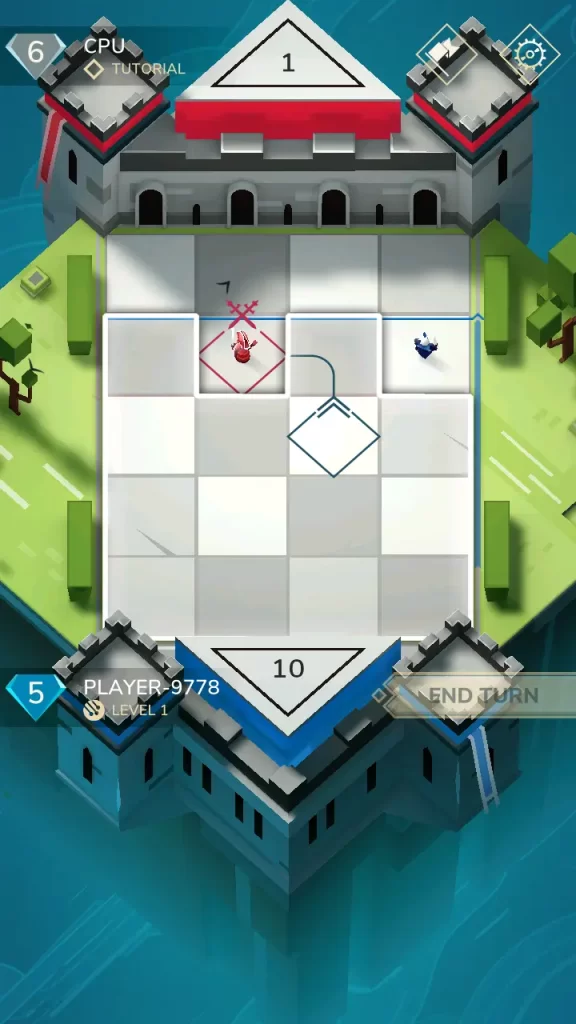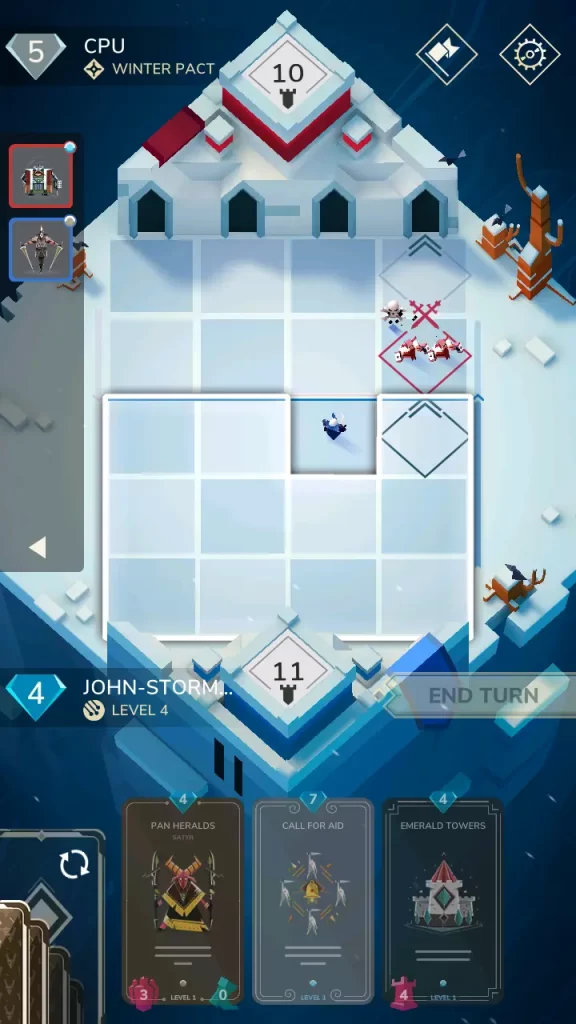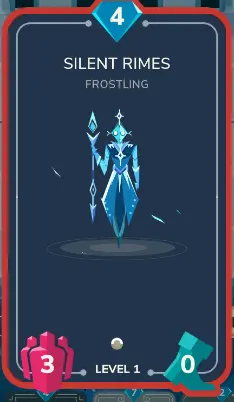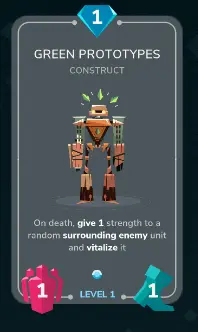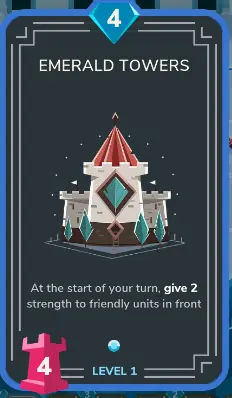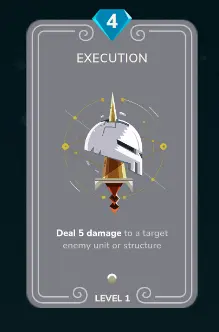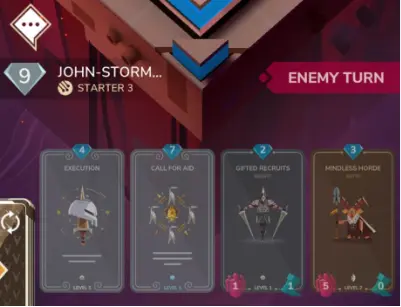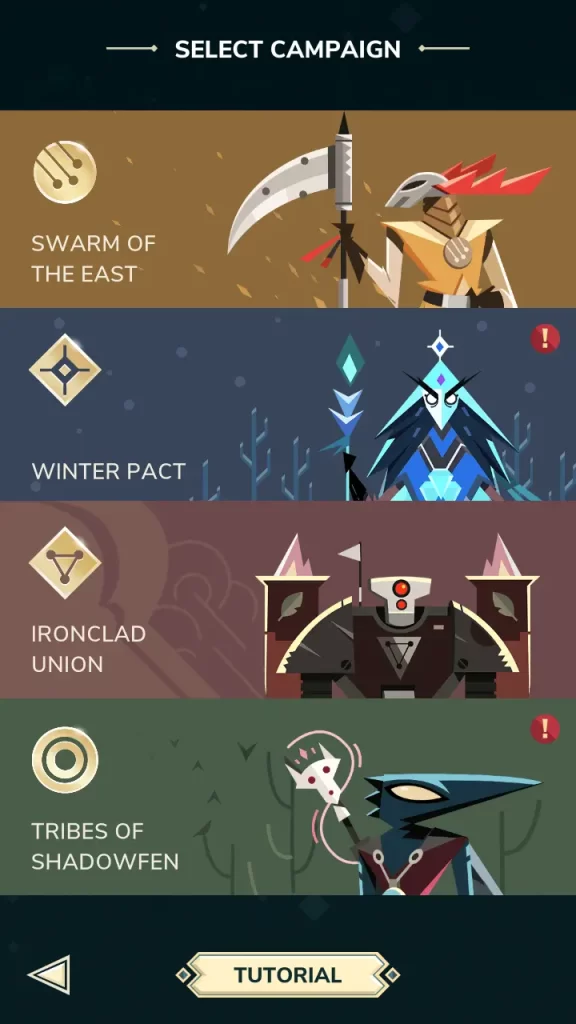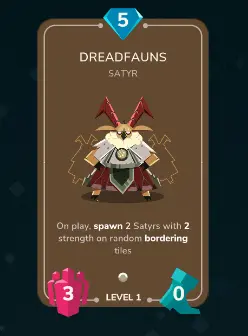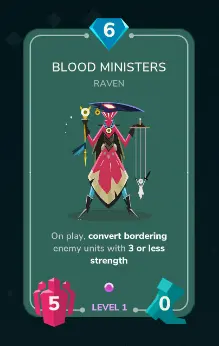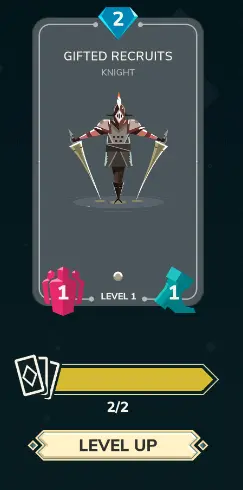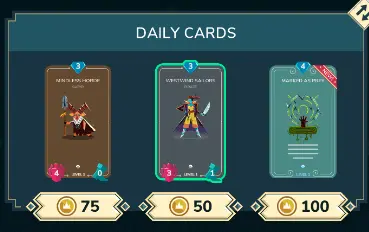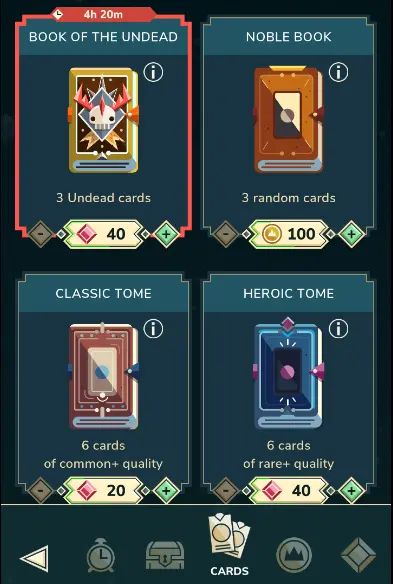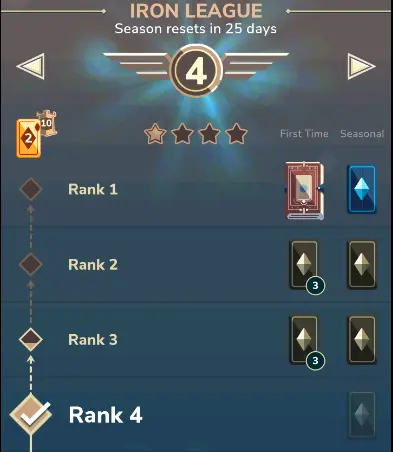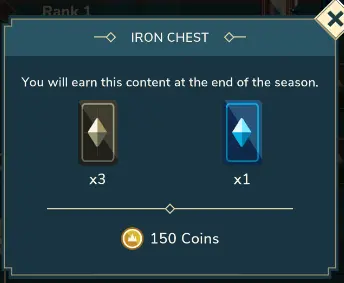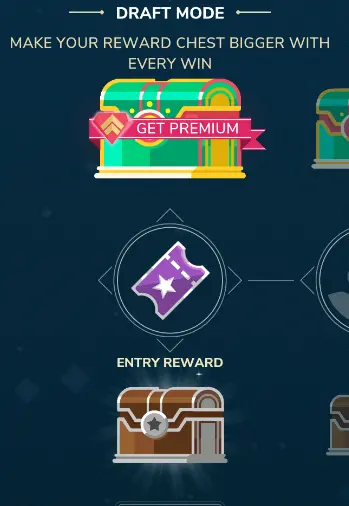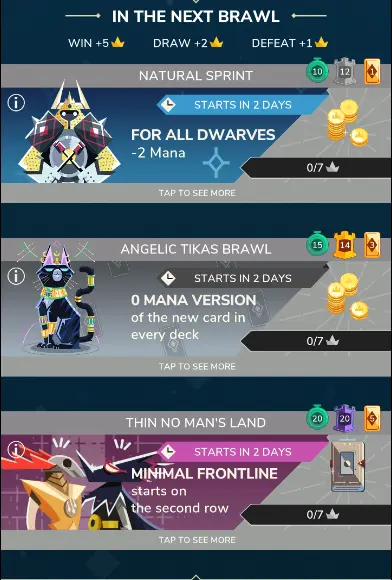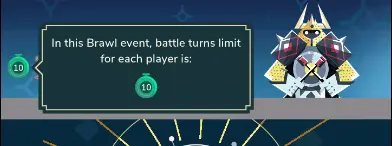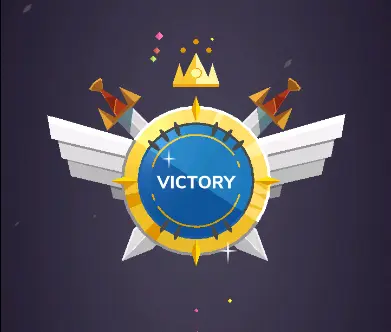Some fight for power, others for glory, and still others for duty. Whether it’s to avenge a wrong or simply to take what they want by force, smacking each other upside the head has long been a part of human history. So what better way to use our armies of mythical beasts, cutthroat mercenaries, majestic dragons, intellectual rodents, and more than to make them fight each other in a card game? It’s all good fun, after all.
In In Stormbound, you’ll command and conquer with your army of grunts and heroes to vanquish your foes. Summon powerful heroes to lead your forces, create fortresses of rock and stone, and cast devastating spells to bring your opponent to their knees and seize victory for yourself., you’ll command and conquer with your army of grunts and heroes to vanquish your foes. Summon powerful heroes to lead your forces, create fortresses of rock and stone, and cast devastating spells to bring your opponent to their knees and seize victory for yourself. All this is in the form of a fast, simple, yet surprisingly deep and engaging card game.
Aspiring Stormbound conquerors can take to the battlefield on Android or iPhone via the Google Play Store or the App Store. Players looking for nicer graphics and sounds can also get in on the fun on PC via Steam.
In our comprehensive Stormbound beginner’s guide, we’ll be going over:
- The rules of Stormbound, as well as how to play the game.
- Learning the different factions, creating your own deck, and how to strengthen your cards.
- The different battlefields and what to expect from them.
Playing The Game
The key to success in any card game is to have a thorough mastery of its rules. Knowing what you can and can’t do, what you can sacrifice, and what you can live without is pivotal to enjoying the rich world of Stormbound. And as there’s no official guide to the game, some concepts require further explanation – like unit interception, speed, frontlines, and so on.
Quick Tips:
- The goal of the game is to reduce your opponent’s base to 0 health.
- Stormbound follows an open-state game flow; movement happens at the start of a turn, players can play any cards afterward, then draw cards until they have 4 in hand, regain mana, and gain 1 max mana at the end of their turn.
- Units have both strength and speed. Strength = amount of damage it does, speed = amount of tiles it moves when played from the hand.
- Units and structures can be deployed on or behind your frontlines. Frontlines are defined as the furthest row you have a unit in. Killing an opposing unit on your turn forces your opponent’s frontline back to their nearest unit – if they have no units, it will return to its initial position.
- Frontlines can only extend until the second to last row on either side of the field.
- When a unit moves via speed, it will turn to fight any enemy unit it can.
- When units meet on a tile, they deal damage equal to their strength to each other.
- Several cards have abilities that compensate for their lower stats.
- Structures do not move but have strength so they can counterattack. They may also have abilities to further your game plan.
- Spells are fire-and-forget cards that you play from your hand.
- Several abilities rely on keywords; become familiar with them so you’ll be able to understand what’s going on.
- All cards have a mana cost; mana does not carry over between turns.
- The turn player can replace one card in their hand during their turn – do this by dragging the card you want to throw to the left, toward the deck.
Attacking The Enemy’s Base
Your goal in Stormbound is to destroy your enemy’s fortress. This is done by getting troops to enter through one of the four doors in your opponent’s base.
Because all units can only move one tile at the beginning of your turn, this usually means that most units will stand outside your opponent’s gates for a turn. This also means that, in most cases, players can muster a last-ditch defensive maneuver to either repel the invaders or mitigate the damage they’ll take. But because of the frontline system, be wary of units with high movement that can rush your gates!
Note that units that successfully enter either your base or your enemy’s base are removed from the board.
Turn Flow
Stormbound follows a less-rigid turn flow order compared to other card games:
- At the start of a player’s turn, all their units on the board move. All combats resulting from this movement are resolved.
- The turn player can then place more units on the board or play spell cards from their hand. When a card is used, it is shuffled randomly back into your deck.
- When a player ends their turn, they draw cards until they have four cards in their hand, gain 1 maximum mana, and replenish their mana to full.
Speed
A unit’s movement in Stormbound would seem to be dictated by its speed stat, the number on the boot icon at the bottom right of a card. However, that’s not the whole story.
There are two movement phases: one that happens at the beginning of a player’s turn, and another when a unit is first placed on the board.
- During the start-of-turn movement phase, all your units move one space forward regardless of what their speed is.
- When a card is placed on the board, it moves a number of tiles equal to its speed stat. This usually means a unit will charge forward, but it can switch lanes to attack enemy units – see the “Interception” section below for more info.
This means that units that have 0 speed are capable of movement, it’s just that they do not move when first placed on your board.
Unit Deployment
Units can be placed on any tile on a row you have control over. This is known as your frontline in official in-game terms.
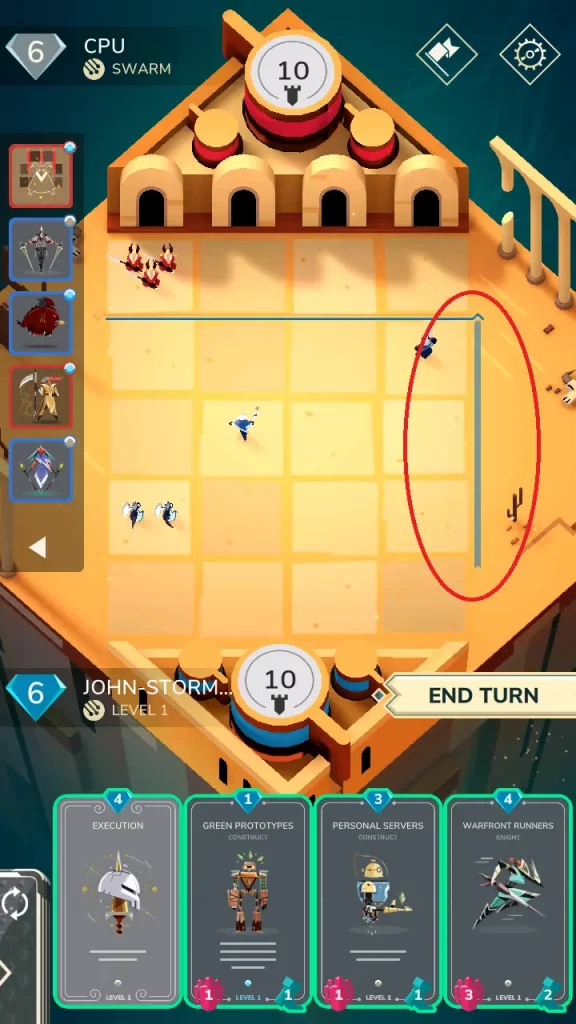
Your frontline is determined by how far your units have moved. If you have an existing unit in a row, you can deploy cards on that row or any row behind them. This allows you to create forward deployment zones by using units with high speed before plopping down stronger, slower units.
Frontlines aren’t exclusive to just one player, and you can be sure that your opponent will be vying for closer control of the battlefield to deploy units at your doorstep. To counter that, you need to destroy their units or structure on your turn. This will cause your opponent’s frontline to regress to the next closest unit they have. If they have no units left, their frontline will be forced back to just outside their base, allowing you to put extreme pressure on them. Battlefield control is extremely important!
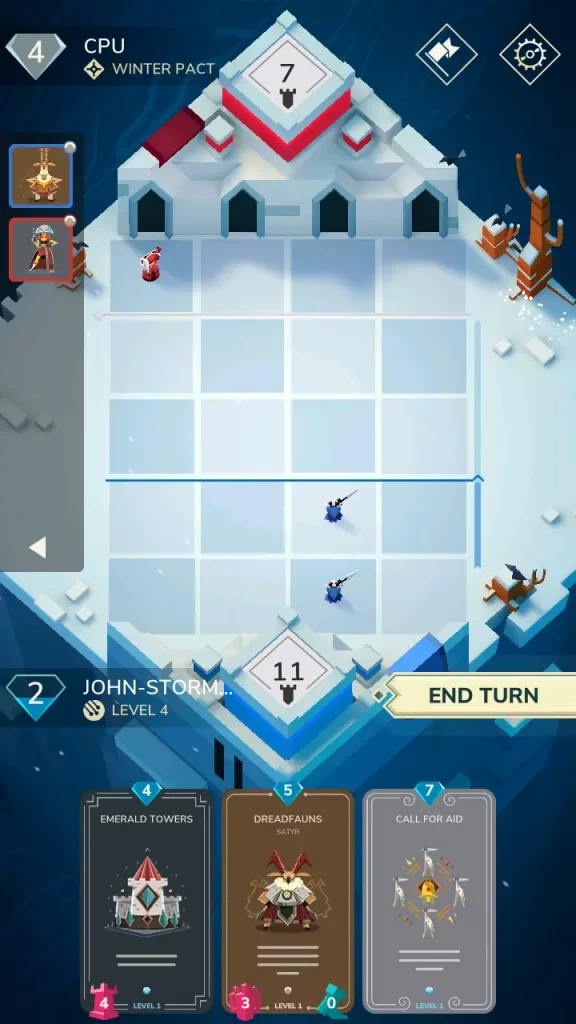
Note that while killing a unit on your turn forces enemy frontlines back immediately, the same thing will happen to you if you lose a unit on your turn and don’t replace it. If your next turn begins and you have no units on your frontmost row, your frontline will be forced back!
The frontline system means that some players can opt to play very aggressively by playing high speed units on their first turn to secure as much of the field as possible.
Interception
Units can and will move to adjacent lanes where there are enemies. On the image below, I’m placing my Warfront Runners (3 strength, 2 move).
If I place them at least three tiles away from my enemy’s Corsair, my runners will spend all their movement points going forward. If, however, I place them nearer the Corsair…
They’ll spend one of their movement points to switch lanes and engage the enemy. As my Warfront Runners has 3 strength compared to the Corsair’s 1, I’ll have a 2 strength Warfront Runners on the second lane at the end of my turn!
It can take a while to become accustomed to unit lane switching, but it’s very important to master it as it not only provides incredible offensive options but also allows you to defend up to 3 lanes with a single card. A good tool to remember this rule is: if a unit can switch lanes to attack, it will.However, lane switching can only occur on the initial placement of a unit; movement at the start of a turn will always only move forward. This also means that a unit can fight a unit in front of it, then turn and fight a unit adjacent to it!
This system also creates a use for cards with zero movement. By placing a powerful but immobile unit in an enemy’s path, they’ll have no choice but to crash against it. And by strategically putting both buildings or powerful units in your opponent’s path, you can deter their rush and exert control over the battlefield – at least until your defenses crumble.
Unit Strength and Combat
The other important stat that cards in Stormbound have is their strength – it’s the number on the red fist icon at the bottom left of a card.
Strength represents not only the combat damage a card does but also how many units that card summons. A card with 1 strength summons only one unit while one with 3 creates a trio of that unit. Even high strength, expensive cards can be whittled down by cheaper ones.
If a unit’s strength becomes too high to create more units on that tile, its new strength will instead be represented by a number (beginning at nine). You can also tap a unit on the board to see what its strength is if you’re too lazy to count. I know I am.
When units clash in combat, they simultaneously deal damage to each other equal to their strength. This leads to each troop losing members until eventually there are none left.
Abilities
Units aren’t just valued for their raw strength and speed. Several units have powerful abilities that can turn the tide of battle despite that individual card’s lack of numbers.
If a unit has an ability, it will describe the ability below its portrait. Several of those abilities use keywords, which I’ll detail in the “Keyword” section below.
Note that just as with strength and speed, you can tap a card on the board to view its abilities.
Structures
Structures are buildings that you can place on the battlefield, each with a particular purpose.
Like units, structures have strength and will retaliate in combat when attacked. Unlike units though, they can never have a speed stat and do not move at the start of your turn. On the other hand, each structure usually has a powerful ability – damage, buffing, healing, or just plain blocking the way – and they can be key to your strategy.
Spells
Spells are single-use cards that are played directly from your hand to activate their effects.
Don’t underestimate the power of spells. While they are single-use, they can be used in a pinch to deal with dangerous foes, strengthen your ranks, or even push your advantage!
Keywords
As with any card game, Stormbound has several keywords denoted by bold text in card descriptions. Here’s a list of some of the keywords you’ll likely run into as a new Stormbound player:
- Bordering: the four tiles in the cardinal direction – north, south, east, and west.
- Confuse: a confused unit has a roughly 66% chance to move sideways during the movement phase. This will initiate combat with friendly units!
- Destroy: destroyed units and structures are removed from play.
- Enemy: any hostile unit, structure, or base. If a card targets the first enemy unit, it will skip checking for structures and bases; if the same card targets the first enemy, it can affect structures and bases.
- Freeze: frozen units skip the movement phase at the start of a player’s turn, and their abilities are muted until they are unfrozen.
- On play: when this card is played from the hand to the field.
- On death: when this card is destroyed.
- Poison: poisoned units take 1 damage at the start of a player’s turn before movement. Removes vitalize if the affected unit had it.
- Pull: pulls units towards this unit.
- Push: pushes units away from this unit.
- Spawn: summon a specific unit.
- Surrounding: the eight tiles in both the cardinal and ordinal directions – north, northeast, east, southeast, and so on.
- Vitalize: vitalized units gain 1 strength at the beginning of their player’s turn. Removes poison if the affected unit had it.
Mana
To play your cards, you’ll need mana. At the end of your turn, you gain 1 mana as well as gain full mana. There is no mana cap. A card’s mana cost is on its upper left, and you can see your mana beside your name – the same goes for your opponent.
Leftover mana does not carry over from turn to turn.
Replacing Cards
Don’t forget that you can always redraw one card during your turn. Just drag the card you want to replace to your deck on the left of the screen.
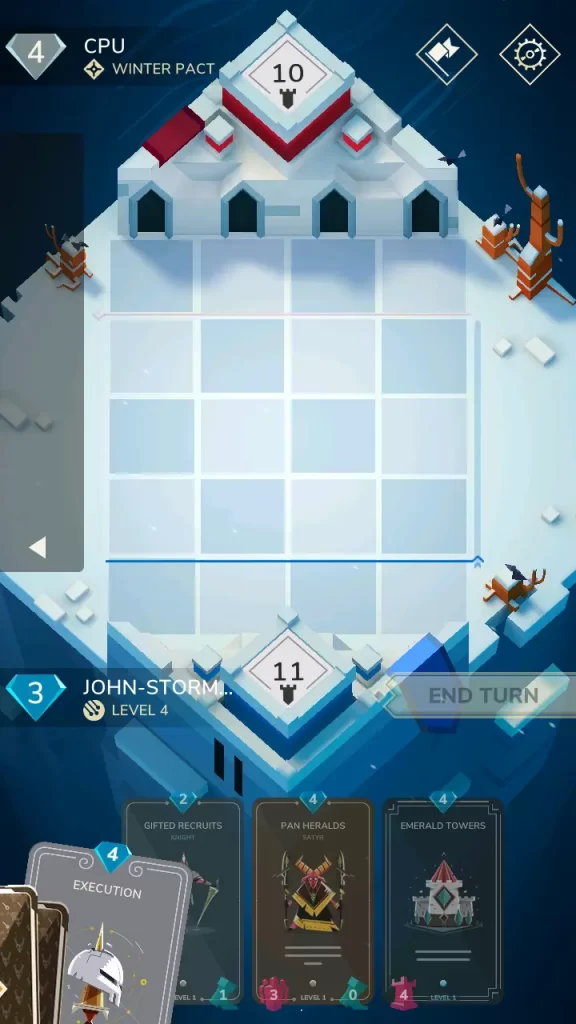
This is part of the tutorial for an important reason, so always keep in mind that you can replace hand bricks with a potentially more useful card!
Factions and Deckbuilding
Once you’re done playing the tutorial, you’ll no doubt be raring to see what cards you can get and what decks you can make. Here’s a rundown of things you need to know when building decks in Stormbound.
Quick Tips:
- Do the campaign. This not only teaches you the ins and outs of each faction but also gives you cards of that faction – excellent for creating a customized starter deck!
- Finding out what deck you like playing with can help conserve resources as upgrading cards gets expensive.
- Master the strengths and weaknesses of each faction to both create a game plan for your deck and find weaknesses in your opponent’s plays.
- Use neutral cards to patch up deficiencies in your chosen faction.
- Strengthen your cards with duplicates. Don’t just focus on rare cards; strengthened commons are very much a force to be reckoned with.
- I’ve included a checklist of where to get coins and rubies for upgrading your cards and buying new ones.
- Be wary of the coin cap – it’s 400 and resets at 7:00 UTC.
Do The Campaign
If there’s one thing I cannot emphasize enough in Stormbound, it’s to do the campaign before anything else.
This is doubly important as it not only gives you free cards but also introduces you to the major card archetypes of Stormbound. As you battle with different factions, you may find that one of them has a playstyle that adheres to your personal preferences. This serves a double purpose in that you can focus your upgrades on cards you like playing with.
Clearing each level of a campaign nets you cards from that faction, as well as a Noble Book containing more cards. Rest assured – your opponents in ranked will very likely have done the campaign to get their starter cards, so you’ll be at a major disadvantage unless you do the same.
Learning The Ins and Outs of Each Faction
There are four (technically five) factions in Stormbound. Each of these factions espouses a particular philosophy and approach to their cards:
- The Swarm of the East is populated by satyrs and the undead. They are an aggressive faction, utilizing token generation, strength, on-death effects, and direct damage to pressure their opponent into playing defensively. However, the Swarm suffers from a lack of late-game presence.
- The Winter Pact encompasses the frostlings and the dwarves (hello, Age of Wonders!). This faction likes to build tall with increased mana generation and high-quality but expensive units. This leads to a turtle and boom playstyle where you weather your opponent’s early turns and make a huge comeback once your resources and defenses have been established.
- The Ironclad Union is comprised of robotic constructs and their creators, the ingenious rodents. While constructs can take the field with brute force, this faction shines when it comes to structures, ranged damage, and unit buffing. On the downside, the Ironclad Union doesn’t have much in the way of hard unit removal or AOE damage.
- The Tribes of Shadowfen are a coalition of demi-humans, namely toads and ravens. This faction utilizes powerful abilities such as poison, strength drain, or even unit control to turn the tides in their favor. Unlike the other three factions, the Tribes don’t have a way to buff their units directly.
- Neutral cards come from all walks of life – they can be pirates, entrepreneurs, knights, soldiers, or any of the races from the factions who can’t seem to find a home. Neutral cards aren’t particularly specialized, but they don’t have any glaring weaknesses either.
Deck Building
Once you’ve decided which faction you want to stick with, it’s time to build a new deck. The rules for deckbuilding in Stormbound are as follows:
- A deck consists of exactly 12 cards.
- You can’t have duplicates of a card.
- A deck can only consist of a single faction as well as neutral cards.
Strengthening Your Cards
Stormbound relies on strengthening your existing cards over playing duplicates; after all, there’s only so much room in a 12-card deck!
The higher a card’s level, the stronger it gets both in terms of base stats and ability numbers. However, you’ll need duplicates of a card to strengthen it – or alternately, you can use fusion stones – as well as some coins. This means that unless you’re shelling out major cash, your powered-up common and rare cards will be the backbone of your strategy as they’re much easier to get than epics. This also means that you should save your fusion stones for rarer cards that are integral to your deck.
To strengthen a card, go to decks, then tap the collection button at the bottom of the screen.
Getting More Cards
As the gameplay loop of Stormbound involves amassing several duplicates of cards, you’ll need to know where to look for them.
The easiest way to get cards is to buy them directly from the shop. The shop offers 3 cards of random rarity (up to epic), which you can buy for coins. Do note that prices increase each time you buy a card of a certain rarity.
You can also buy card packs (books) from the shop. You can opt to get a Humble Book which only requires you to watch an ad, though it only has a single card. Buying Noble Books is a better deal – for 100 coins, you get 3 cards of varying rarity. Finally, there are premium packs for sale for rubies: some give you cards of a specific race, others of specific rarities.
Getting Coins and Rubies
Upgrades don’t pay for themselves! Here’s a list of where to get coins and rubies for all your card-buying needs:
- Winning your first match of the day gives you a big coin bonus.
- Winning matches gives you a small payout depending on what rank you’re in.
- Daily quests give out a good amount of both coins and rubies. If you run across a quest that’s too difficult, you can tap the refresh button on the upper right to change the quest at the cost of watching an ad. Note that progress in the campaign or tutorial modes does not count toward quest objectives.
There’s also a daily coin cap of 400 coins. Coins earned from fighting and winning battles count towards this cap, while those from completing quests or are bought with real money are not.
Seeking Battle
Now that you’ve got your new deck and stronger cards, you’re probably itching to try it out on other players. Here’s a quick guide on the different modes of Stormbound, what to expect from them, and what you can get out of them.
Ranked Mode
Ranked mode is where you’ll be spending most of your time in Stormbound. In this mode, you’ll be competing against other players for positions on the leaderboards. The higher you go, the better the prizes you earn when the season ends!
The leagues, in rising order, are starter, iron, bronze, silver, gold, platinum, diamond, and heroes. The further up you go, the better the prizes to be won – more gold after each fight as well as better end-of-season rewards – but the risks are greater as well. You’ll also get a special one-time reward for reaching a rank for the first time on top of the end-of-season prize.
As a new player, you’ll be in the starter league. This league is special in that you cannot lose rank stars by losing. Starting from the iron league, you lose one star every time you lose, though your rank cannot drop to the former league.
Each rank has its restrictions, namely a fortress level and card level restriction. If you’re over this cap, worry not – your base health and cards will be lowered to the cap of your current league. Upgrade away!
Draft Mode
Draft mode is a unique challenge where you play with a unique drafted deck (hence the name) whose cards can be swapped or upgraded after each match. This means that due to the randomness of the deck you’ll make, there’s an even playing field as upgrades are out of the picture. More often than not, it’s individual skill that will determine the winner of the match.
Draft mode involves a series of up to 8 matches, and the battles continue until you’ve either won six matches or lost three. The more you win, the better the prizes of your end chest!
Draft mode does require some knowledge of the game, which is why it’s only available once you have at least 11 base health. There’s also an entry fee for draft mode, and you can pay in either Ticket Cards or a large sum of coins. You can get one free Ticket Card per week by watching ads in the shop. You can also play for fun by watching an ad; note that while this forfeits draft mode prizes, you still get coins for winning as well as progress for your quests.
You can only play up to three draft sessions per week, and Draft is only available from Monday to Wednesday, server time.
Brawl Mode
Brawl mode is what takes up the timeframe left behind by Draft, running from Thursday to Sunday.
Brawls are largely the same as regular matches but have special rules in play. Foremost among these changes is the effect of special arenas, which incentivize certain strategies or cards. There are three arenas every brawl – Casual, Warrior, and Ultimate – and you’ll need higher base health to participate in tougher arenas. Naturally, the higher the tier of the arena you fight in, the better the rewards.
Like ranked mode, Brawl has both a base health cap and level cap, and your cards will be weakened to match these caps should you go over. Unlike ranked mode, Brawl matches have a turn limit, and players will be judged based on how much health their base had at the end of a match. This creates a unique situation where Brawls can be drawn if both players had equal health.
Score in Brawl mode is done by measuring crowns. Winning a match nets you five crowns, losing a match gives you one crown, and drawing gives both players 2 crowns. These crowns are used to reach milestones which give out rewards for achieving them.
“But can’t I just lose on purpose to reach the next level” is a question you’re probably asking. The answer is no – each milestone must be achieved without losing more than twice. If you lose a third time, you’ll be bumped back down to the last milestone you earned. There’s a safety net here though – if you lose the second match but earned the 1 crown that would put you in the next milestone, you’re put in that milestone.
Glory Awaits!
Now that you’ve got the basics of Stormbound down, there’s nothing more I can teach you. You’ll need to strike out on your own. You’ll need to hone your strategies by facing down powerful and wily opponents across multiple battlefields while praying to RNG to draw that one epic card you need. Just remember – the trick to any card game is to always ensure you’re having fun.
That concludes this beginner’s guide to Stormbound, and while there’s nothing more I can teach you regarding the basics, you’re ready for more intermediate and in-depth learning resources such as Stormbound Kitty. If there are any other basics I missed, or other tips and tricks for beginners you’d like to share, make yourself heard in the comments below!

